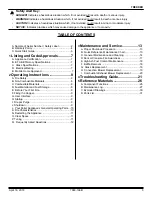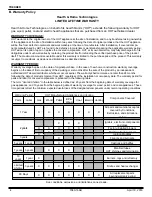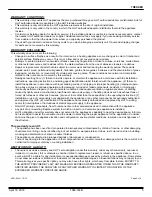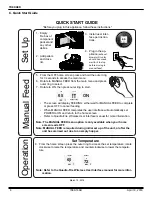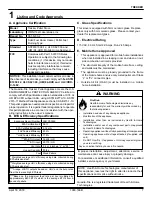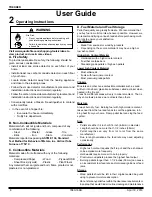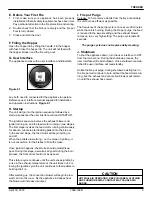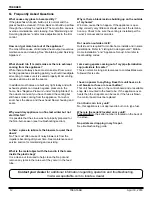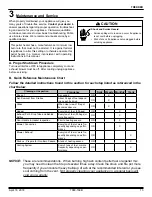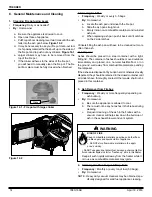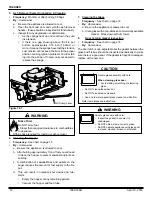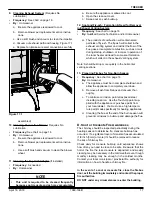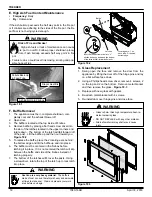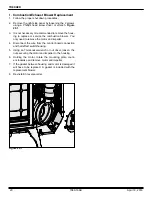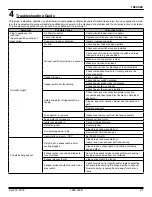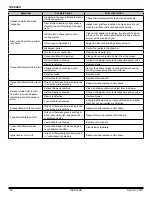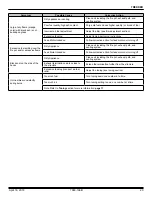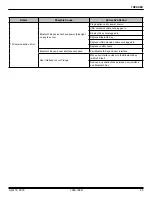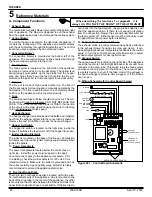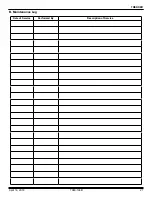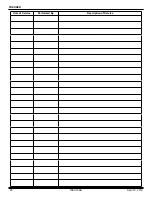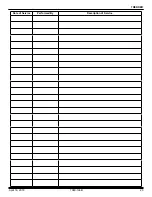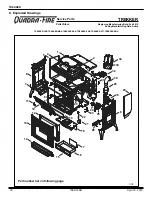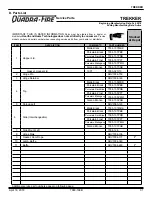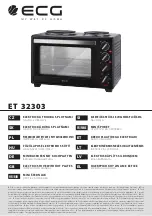
April 18, 2018
7080-166B
17
TREKKER
Figure 17.1
NOTE
• This unit is required to be cleaned frequently
because soot creosote and ash may accumulate.
assembled)
10. Cleaning Convection Blower
Requires No
Lubrication
• Frequency:
See chart on page 16
• By:
Homeowner
a. Be sure the appliance is allowed to cool.
b. Remove blower per replacement section instruc
-
tions.
c.
Use a soft brush and vacuum to clean the blower
wheel.
11. Cleaning the Top Vent Adapter
(if installed)
• Frequency:
As needed
• By:
Homeowner
a. Be sure the appliance is allowed to cool.
b.
Open the clean out cover.
c.
Sweep out any ash build-up.
12. Soot and Fly-ash: Formation & Need for Removal
in Exhaust Venting System.
• Frequency:
See chart on page 16
• By:
Qualified Service Technician and/or Homeowner
a.
The products of combustion will contain small
particles of fly-ash. The fly-ash will collect in the
exhaust venting system and restrict the flow of the
flue gases. Incom plete combustion, such as occurs
during startup, shut down, or incorrect operation of
the room heater will lead to some soot formation
which will collect in the exhaust venting system.
Note: Ash will build up more quickly in the horizontal
venting sections.
13. Preparing Firebox for Non-Burn Season
• Frequency:
See chart on page 16
• By:
Homeowner
a.
The appliance must be in complete shutdown and
allow the appliance to completely cool down.
b. Remove all ash from firebox and vacuum thor
-
oughly.
c.
To minimize corrosion, paint all exposed steel,
including cast-iron. Use the Touch-Up paint sup-
plied with the appliance or purchase paint from
your local dealer. You must use a high-tempera-
ture paint made specifically for heating appliances.
d.
Cleaning the flue at the end of the burn season will
prevent corrosives to build-up and damage the flue.
D. Soot or Creosote Fire Awareness
The chimney should be inspected periodically during the
heating season to determine if a creosote build-up has
occurred. If a significant layer of creosote has accumulated
(1/8 inch [3mm] or more) it should be removed to reduce
the risk of chimney fire.
Check daily for creosote build-up until experience shows
how often you need to clean to be safe. Be aware that the
hotter the fire the less creosote is deposited, and weekly
cleaning may be necessary in the mild weather even though
monthly cleaning may be enough in the coldest months.
Contact your local municipal or provincial fire authority for
information on how to handle a chimney fire.
In the event of a soot or creosote fire, close the firebox
door, exit the building immediately and contact the proper
fire authorities.
DO NOT under any circumstances re-enter the building.
9. Cleaning Exhaust System
(Requires No
Lubrication)
• Frequency:
See chart on page 16
• By:
Homeowner
a. Be sure the appliance is allowed to cool.
b. Remove blower per replacement section instruc
-
tions.
c.
Use a soft brush and vacuum to clean the impeller.
d.
Vacuum out exhaust path and housing. Figure 17.1
e. Replace fan (make sure elect connections are fully

